The forex markets are beginning to acknowledge the MB script ahead for weakening inflation as China hits the brakes. There is lots of wood to chop here but it has begun. DXY was soft and EUR firm:
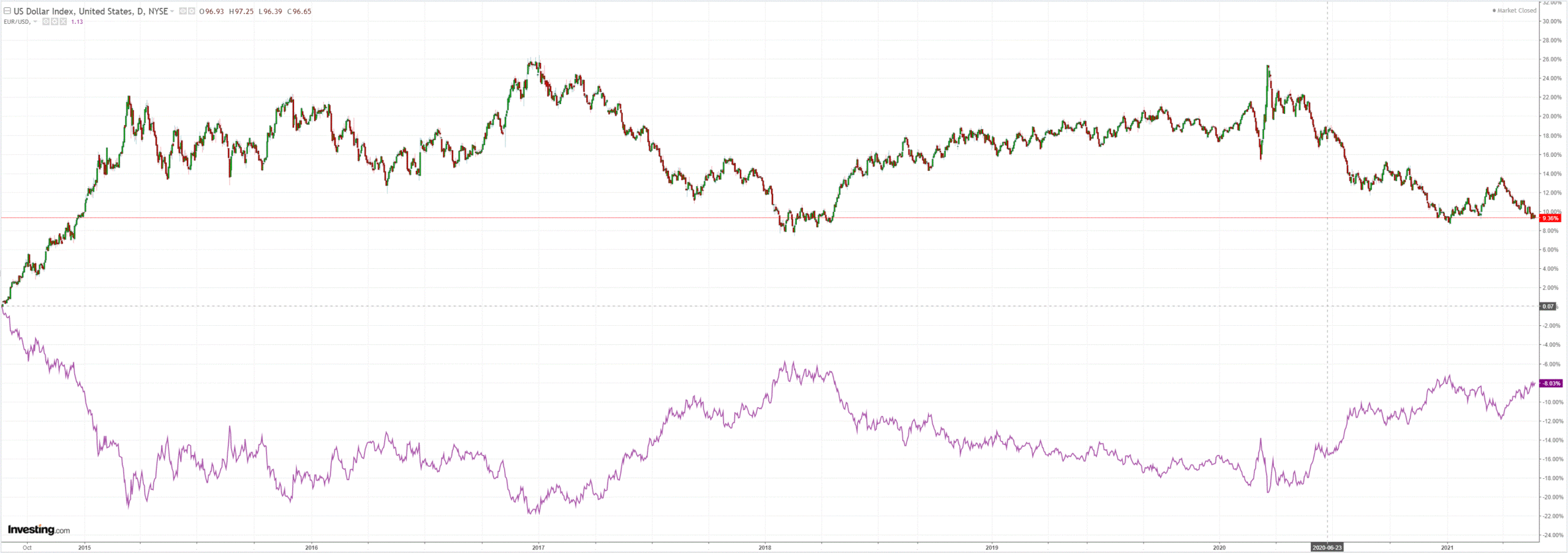
The Australian dollar clung on:
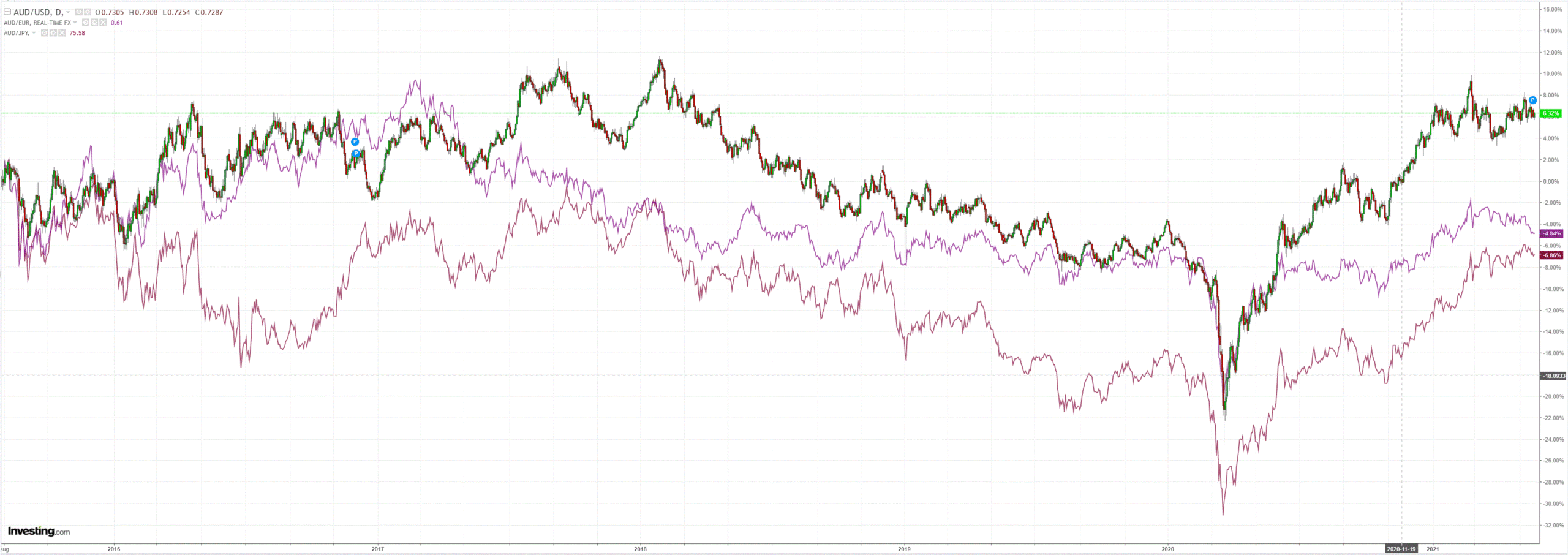
Oil rallied. Gold held:
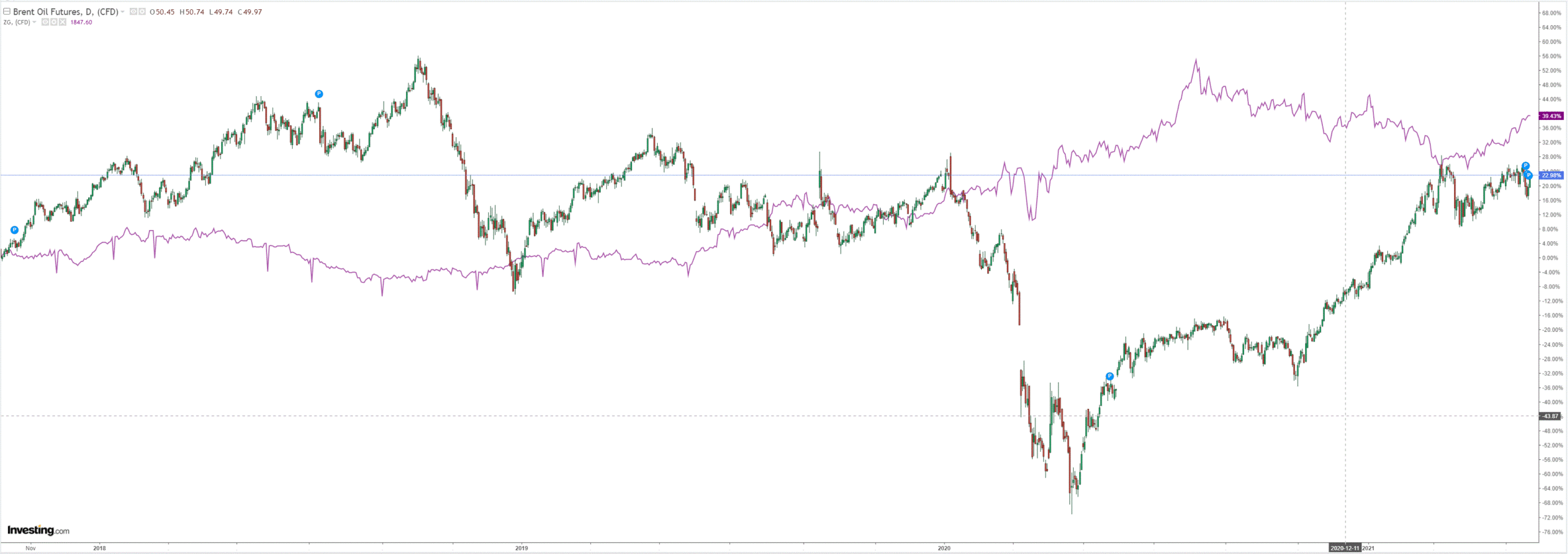
Dirt was mixed. There’s big downside ahead for copper in my view:
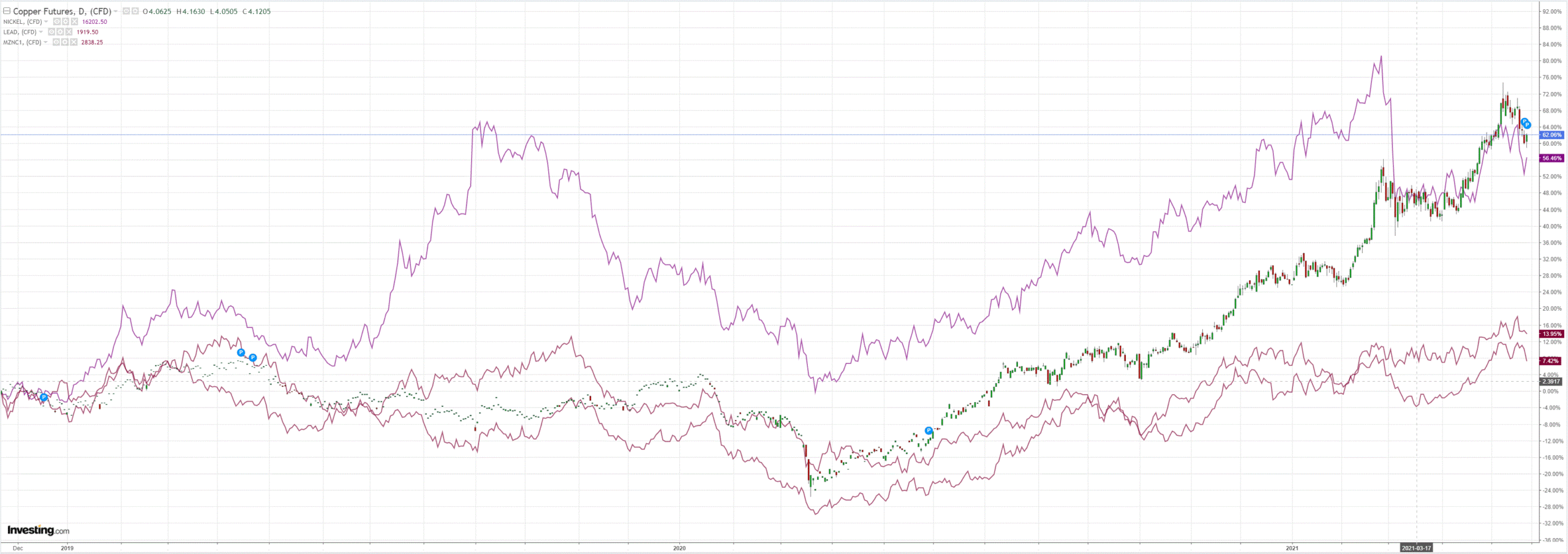
Big miners bled away:
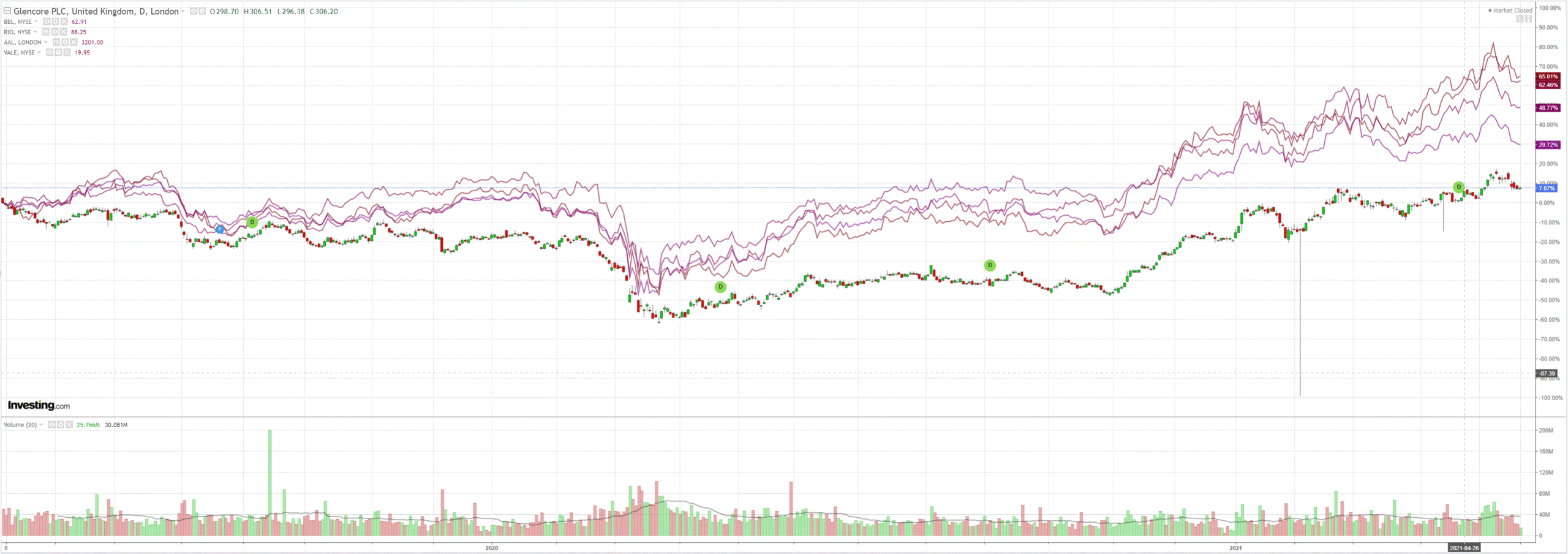
EM stocks fell:
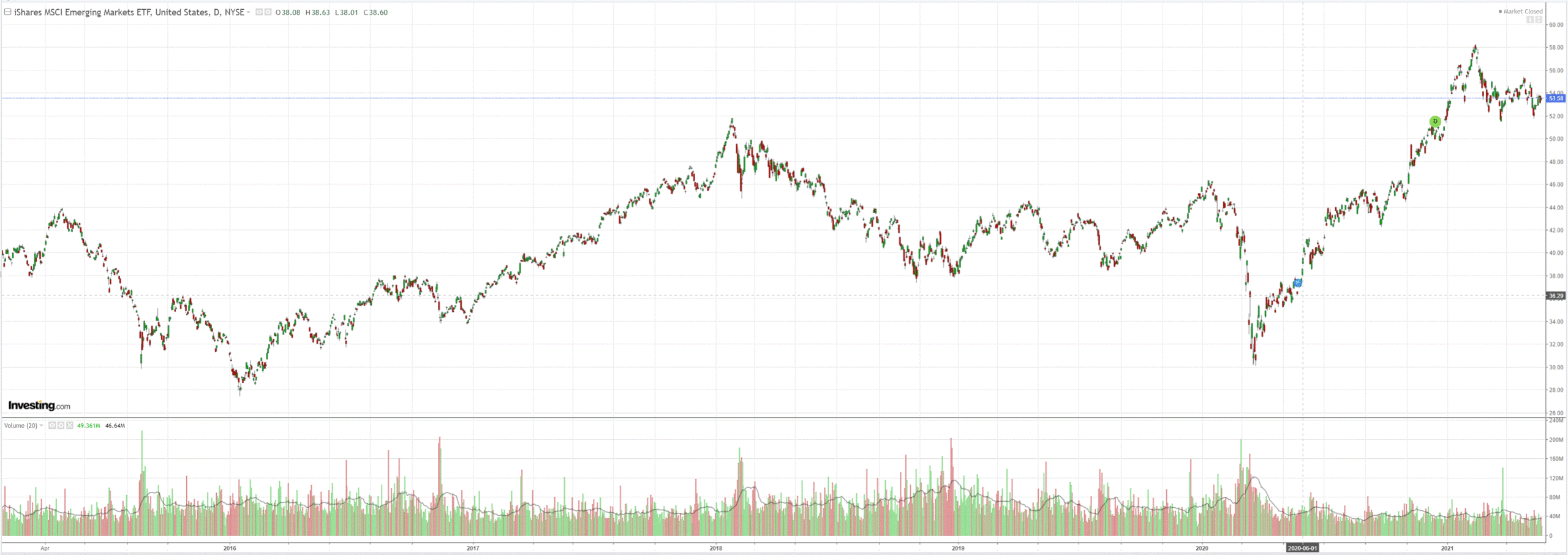
Junk is fine:
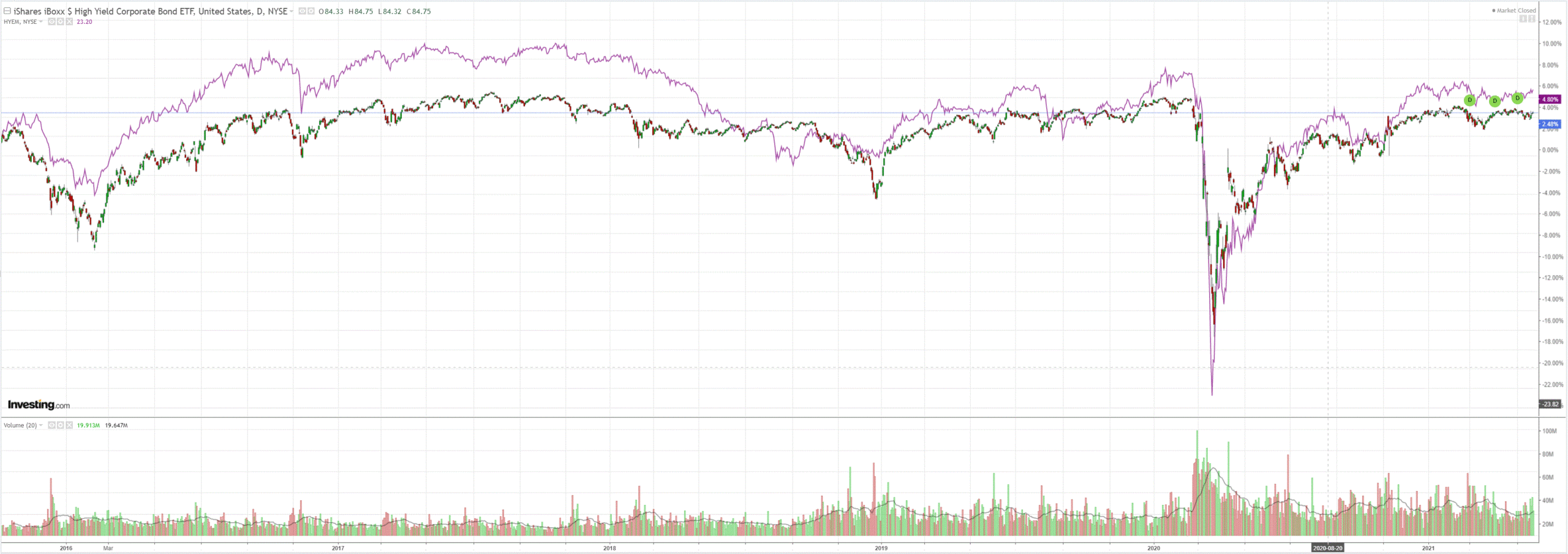
US yields fell:
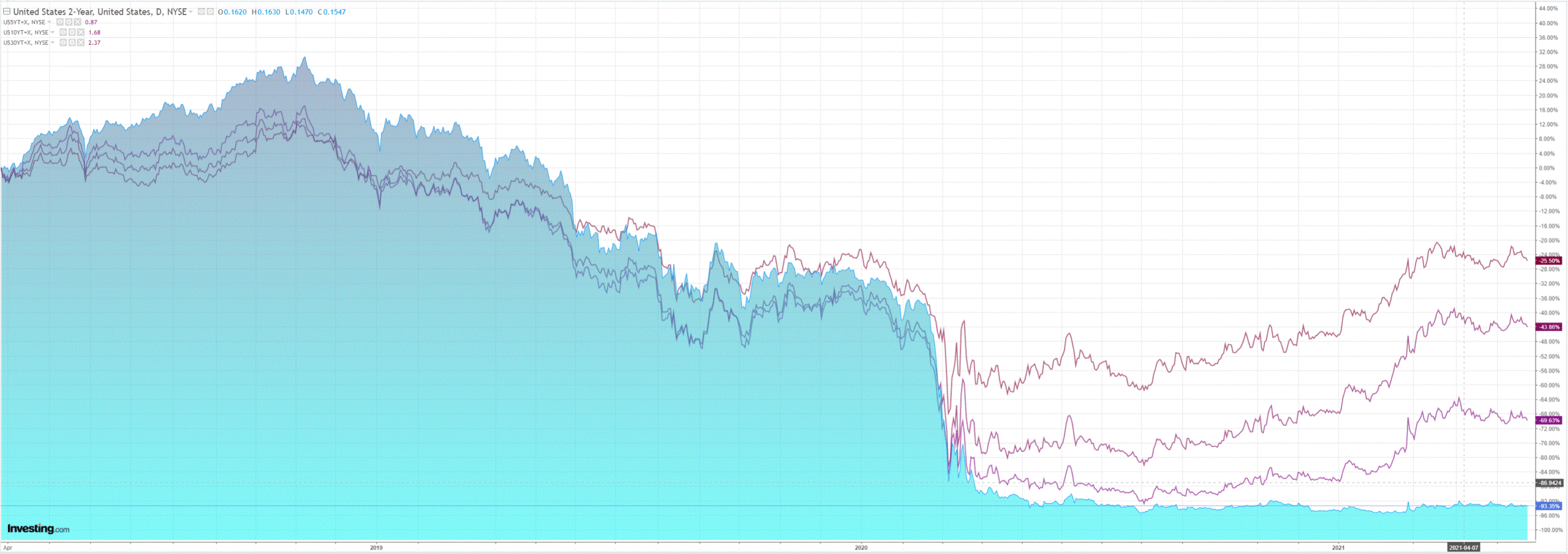
Which launched stocks, especially tech:
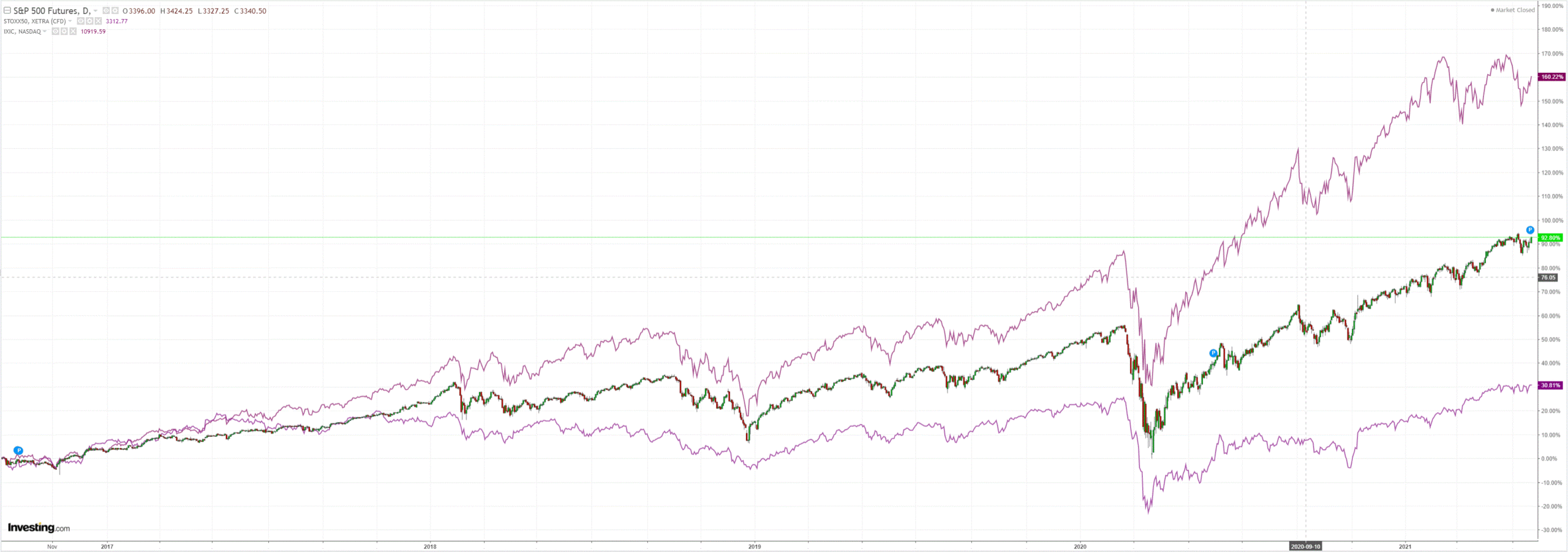
Westpac has the wrap:
Event Wrap
The Chicago Fed national activity survey taken in April pulled back towards trend (zero) with a reading of 0.24, below the median estimate of 1.20 (prior reading was 1.71). The moderation was evident in production, which fell from 0.92 to 0.18, and personal consumption which slipped to slightly below zero.
FOMC member Bullard (non-voter) said “I think there will come a time when we can talk more about changing the parameters of monetary policy. I don’t think we should do it when we’re still in the pandemic…. When you’re in the crisis I think you should make sure you’ve exited the crisis aspect before you think about changing policy. We’re not quite there yet…I think we will get there in the months ahead, and I think that’ll be the time we can start thinking about altering our asset purchase policy”. He expects to see higher inflation through 2021 and into 2022, but it will be mostly temporary. Bostic said the economy has been more resilient than expected, but added that the Fed must ensure that there are no lasting impacts from the pandemic. Brainard spoke mostly about digital currencies, but did say “…if we saw some development pushing inflation up I wouldn’t expect that to get embedded in the ongoing inflation rate… If we did see inflation that moves persistently and materially above our goals in a manner that also threatened to have some impact on those long-term inflation expectations, we have the tools and the experience to gently guide inflation back to target”.
Bank of England Governor Bailey said that it was unlikely that the MPC would use negative interest rates, and it was confident in the labour market recovery, and that they would watch inflation carefully. Haldane saw inflation risks to the upside. More noteworthy was a shift from Saunders, who said that modest tightening may be needed if inflation rose persistently, adding markets are pricing a 50bp increase over the next three years.
Event Outlook
Australia: The May 8 update of Weekly Payroll Jobs and Wages will give us a clearer read on the state of the post-JobKeeper labour market without distortion from the Easter period and school holidays.
Germany: The May IFO business climate survey is expected to climb to 98.1 as the European economic recovery continues to build.
US: Two measure of March house prices, FHFA house prices (market f/c: 1.3%) and the S&P/CS home price index (market f/c: 1.33%), will continue to point to robust house price growth on strong demand. However, there are signs that affordability is becoming a constraint, which is expected to underpin a 7.0% fall in April new home sales. May Conference Board consumer confidence, which lagged the broader recovery of economic activity, is expected to ease a touch to 118.9. The May Richmond Fed index is likely to show further signs of input price pressures and should edge up to 18. Finally, the FOMC’s Quarles will testify before the Senate Banking Committee.
The key development last night was China again declaring loud and clear it is going to crush commodity prices. Iron ore is getting slaughtered. I expect the same to come to base metals in due course.
What this will do to forex is fascinating. Obviously, it will pressure AUD lower. But it will also pressure other central banks, including the Fed, to not tighten early.
This presents the unusual circumstance of DXY and AUD falling simultaneously.
If this transpires during the European recovery in H2 as the US fiscal cliff slows that economy (before US fiscal exceptionalism kicks in in 2022) and before China gets too weak, then the AUD will only respond to falling commodity prices slowly.
Indeed, we have seen how the AUD failed to launch during the commodities blowoff because DXY refused to fall as far as most expected.
Now AUD may mimic the same on the downside, until such a time as enough damage is done to prices, or the US recovery starts to print enough endogenous inflation to trigger Fed tapering.
If so, holding EUR/AUD offers better short-term upside than DXY/AUD.
That said if the US fiscal cliff were to combine with the China slowdown and crashing commodities in H2 to spook risk assets then DXY will act as the safe haven.
Either way, AUD is cooked.

